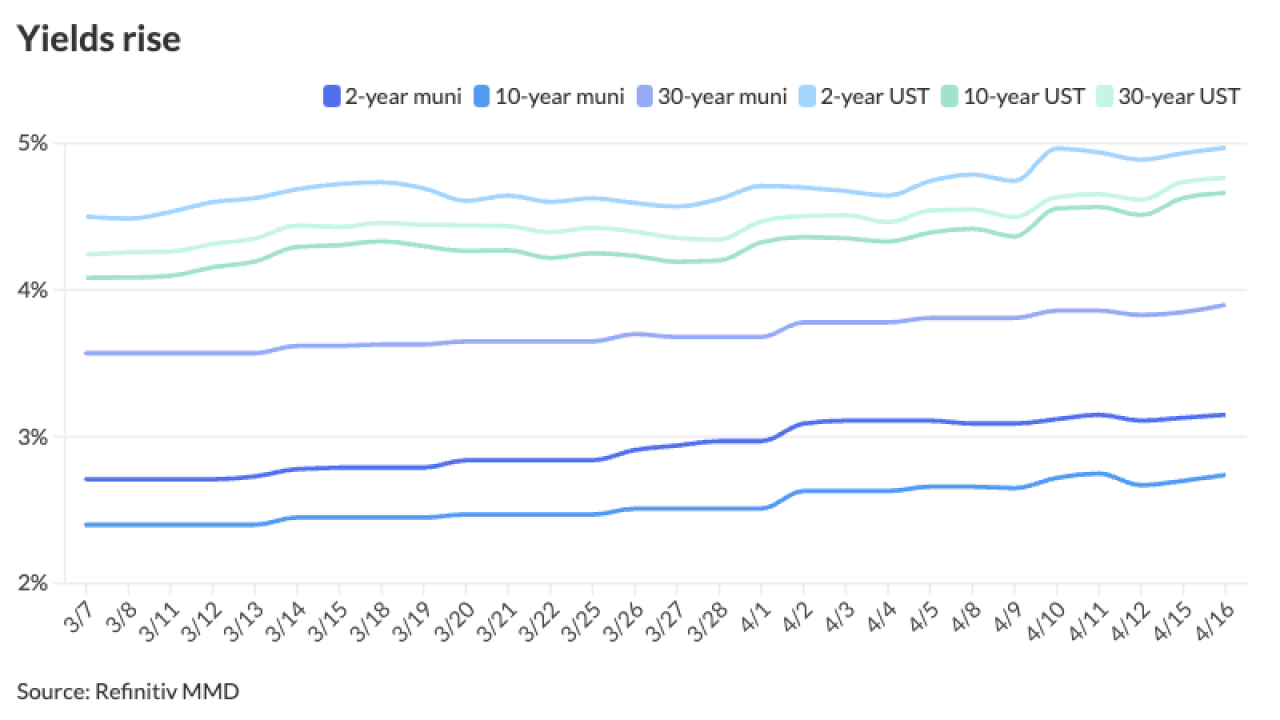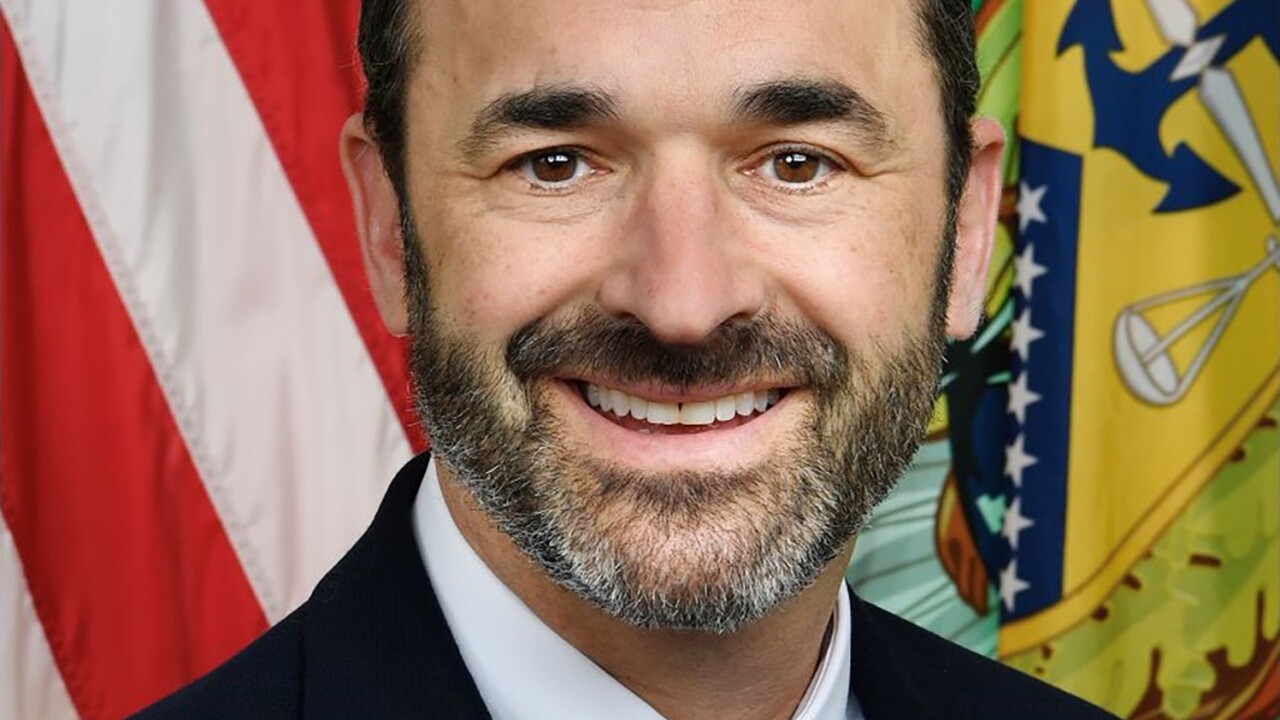
DALLAS - The Utah Transit Authority plans to take a record $700 million of sales tax revenue bonds to market next week to expand its new FrontRunner commuter railroad, extend the Trax light rail lines, and finance system-wide improvements.
This issue will be priced through negotiation on March 26, with UBS Securities LLC as senior manager and Morgan Stanley and Merrill Lynch & Co. as co-managers. The largest bond package in the UTA's history is part of its $2.5 billion Frontline 2015 plan to build 70 miles of rail in seven years.
"We did use a small amount of our 2007A bond issue for the project, but this is really the first big issue for Frontline 2015," said Richard Swenson, financial services manager for the UTA.
Pledged revenues for the 2008A bonds consist primarily of a senior lien on gross sales and use taxes authorized by state law, approved by voters, and levied by participating counties, cities, or towns.
Last June, the UTA sold $261 million of revenue bonds - the largest issue in its history at the time - to provide local funding for the northern FrontRunner.
That debt was issued as subordinate lien to preserve the UTA's senior-lien capacity, a move that Swenson believes will pay off with the upcoming issue that carries senior-lien security. With the debt markets in turmoil, Swenson expects high-quality credits such as the authority's to attract a healthy crowd of investors.
"One of the analysts at Fitch told us that we were the highest rated transit agency," Swenson said. "We've been told by our underwriters that we're known and will be well received."
The bonds carry a AAA rating from Standard & Poor's, a AA from Fitch Ratings,and a Aa3 from Moody's Investors Service.
Fitch also issued a AA-minus on the UTA's subordinate sales-tax revenue bonds. With $205 million of outstanding senior-lien bonds before this deal, the authority also has $436 million of subordinate-lien sales tax revenue bonds.
Swenson said the agency is considering bond insurance through triple-A rated Financial Security Assurance, but considers coverage unlikely. The downgrades of several bond insurers and declining confidence in the sector played a part in the UTA's thinking, according to Swenson.
"What we've seen is that it costs three to four times what it used to for insurance, and we just don't see the benefit," he said. "But who knows? FSA may surprise us."
The UTA does not have to issue all $700 million of the bonds and will make a decision based on market conditions next week.
"Things have been pretty crazy," Swenson said. "Still, the market's relatively low compared to the last 20 years."
The new issue comes amid a weakening economy and soaring construction inflation, as well as market turmoil. But Fitch analysts Kyle Gephart and Amy Doppelt praised the UTA's conservative approach to financing.
"To date the authority has struck a prudent balance between operating and capital needs, which, when combined with the flexibility of the capital plan, afford adequate insulation to manage through unexpected volatility in sales tax collections and/or greater than expected operating expenses," Gephart and Doppelt wrote in their report.
Created by state law in 1970, the UTA provided bus service until 1999, when it began operating the Trax system with 19 miles of light-rail lines in Salt Lake County, including Salt Lake City.
When the first 17.3-mile Trax line from Sandy to downtown Salt Lake City opened on Dec. 4, 1999, the UTA offered free rides, drawing crowds that stood in long lines. The debut came six years after voters rejected a proposed rail system.
Anticipating the 2002 Winter Olympics, the federal government helped speed the 2.3-mile University line to completion in 16 months. Despite the achievement, the Trax line was not used to carry spectators to Rice-Eccles Stadium because of security concerns in the wake of the 9/11 terrorist attacks.
Today, the UTA's service area covers nearly 1,400 square miles, including all or parts of six counties, where nearly 80% of the state's population lives. The rail system carried more than 125,000 riders in 2007.
Next month, the UTA plans to launch its new FrontRunner commuter rail line, which runs north and south along the Wasatch Range east of the Great Salt Lake.
Studies for a potential commuter rail project on the Wasatch Front began in 1997, with the Weber County to Salt Lake Commuter Rail project included in the long-range transportation plan adopted by the Wasatch Front Regional Council in December 2001.
The area's population is expected to grow by almost a million people over the next two decades, according to UTA studies. With travel demand growing at a compounded annual rate of 4% each year, the number of daily trips in the year 2020 would be more than double the number of daily trips today, studies show.
With project costs of $612 million, construction of the Weber County to Salt Lake City Northern FrontRunner is scheduled to begin April 28. The upcoming bond deal will help finance the southern extension of the FrontRunner. Frontlines 2015 also includes light-rail expansion to the South Jordan, Draper, and West Valley communities, as well as to Salt Lake International Airport.
Project funding comes from a mix of sources, including sales tax revenue bonds, federal grants, and operating revenues.
In September, the UTA won agreement from the federal government to treat all five of its rail projects as one project, allowing federal funds to cover 20% of the total cost. Agency officials called the agreement unprecedented.
Current debt agreements call for the highest sales tax pledge of 0.68375 cent from Salt Lake County, followed by lower pledges from participating cities in Box Elder, Utah, Davis, Weber, and Tooele counties. State legislation is expected to be enacted to raise the rate to 0.55 cent county-wide for Davis and Weber counties, but the additional revenue has not been included in UTA projections.
"Pledged sales tax performance has been consistently strong, reflective of the area's growth economy," Fitch analysts wrote. "From fiscal 1997 to 2000, revenues averaged 4.1% annual growth, and from fiscal 2001 to 2007, revenues average 12.5% reflective of several increases."





